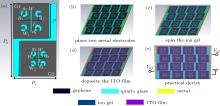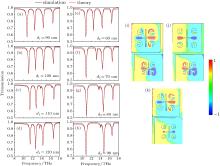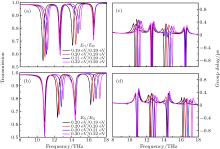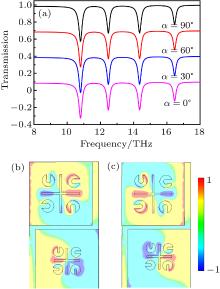中国物理B ›› 2020, Vol. 29 ›› Issue (11): 114203-.doi: 10.1088/1674-1056/abb307
Hailong Huang(黄海龙)1,2, Hui Xia(夏辉)2, Hongjian Li(李宏建)2,†( )
)
Polarization-insensitive complementary metamaterial structure based on graphene for independently tuning multiple transparency windows
Hailong Huang(黄海龙)1,2, Hui Xia(夏辉)2, and Hongjian Li(李宏建)2, †
- 1 The Research Department, Beijing Zhongkexin Electronics Equipment Co. Ltd, Beijing 101111, China
2 School of Physics and Electronics, Central South University, Changsha 410083, China









